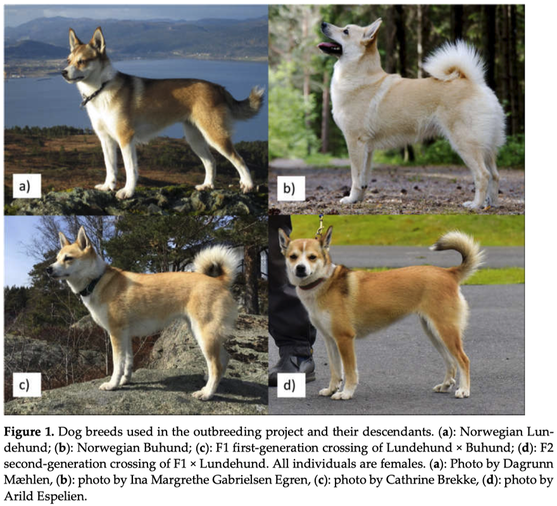In the 1980s, laws were passed in the United States designed to protect the welfare of animals. They apply to ALL animals. As a scientist that works with animals, I have to abide by these laws as well. Any study I wish to do that involves animals *** IN ANY WAY *** must be reviewed by a university committee that includes experts in the field, veterinarians, and people who evaluate issues of ethics and animal welfare. If I want to go bird watching for fun this weekend, I grab my binoculars and go. If I want to study the courtship behavior of pelicans, I must write a proposal that provides the background and justification for the study, and details about any way in which it will affect the animals. There must be specifics if the protocol will produce any discomfort or pain to the animal or alter its normal behavior. For lab studies, it must address housing (cage details, room temp, airflow, feeding and care, etc). For field studies, it must cover things like individual interactions, territoriality, nesting, feeding, and how far away observers will be would all be under scrutiny.
Every research protocol must be approved by this committee before any study can go forward. In the Methods section of the published papers you read, you will see a statement confirming that the procedures involving animals were reviewed by an institutional animal care committee. If you want to collect a DNA sample using a cheek swab, the procedure must be described and approved by this committee.
This entire process proceeds under the stipulations of the animal welfare legislation. If there are violations, the research can be terminated and grant money rescinded. In fact, serious infractions can result in ALL the federal research money at a university – for EVERYBODY doing research - being frozen until welfare issues are addressed. If the university does not comply with the regulations, everybody’s research programs are shut down.
These laws have been on the books in the US for decades. Other countries have similar laws. Now in Norway, a case has gone to court that argued that welfare laws were being violated in the breeding of two breeds, Bulldogs and Cavalier KC Spaniels, because of their well-documented health issues. The sides made their cases, and this week the court agreed that the breeding of these two breeds was in violation of laws that protect the welfare of animals.
This is not an attack on breeders. It simply applies existing law to a group of animals, purebred dogs, that have been flying under the radar of animal welfare legislation. If there were no welfare issues for these two breeds - i.e., that the dogs being produced can be expected to be healthy and not suffer from serious or systematic health issues that could cause pain and suffering - there would have been a different outcome.
This is not the beginning of an indiscriminate attack on all breeds. It is, however, a test case based on two breeds that makes it clear that the existing welfare laws in Norway apply to dogs just as they do to other animals. Everybody must abide by these laws because they protect the welfare of animals.
Breeders are screaming that this ruling is unfair, that they must "fight", that this is "anti-breeder", and violating the "rights" of breeders. These things are not true. The laws apply to all animals. Breeders do not have any special “rights”; they must abide by the welfare laws too. For this reason, appeals will be lost if the issues about welfare are not resolved.
Pushing back against these laws will put you in the awkward position of having to argue that you should be able to disregard welfare issues that are serious enough to run afowl of the laws that apply to everybody. If this is your plan, you should start working on your defense now.
The solution to this is simple. Go down the list of breed-specific health issues of dogs and get started solving those problems. Some of the problems are written into breed standards - muzzles too short for effective thermoregulation, skin folds that promote infection, short backs that result in deformed vertebrae and herniated disks, etc. Others are unrelated to conformation, but reflect exceptional risks for health issues, often for a specific breed - death from DCM, various cancers, seizures, allergies, hip dysplasia, degenerative neurological diseases, and others.
Breeders will argue that they have been prioritizing health and trying to solve these issues, but in most cases they have been making little progress. There are lots of reasons for this, but the scientists will tell you that there is one, single, significant issue at the root of most of these problems - the closed stud book.
Here's the bottom line. You cannot solve health issues if you lack the genetic diversity in the breed to select for genes that would restore health. You can't. It's as simple as that.
There is now a published study documenting a breeding program for Norwegian Lundehunds that is achieving success in solving serious health issues of this breed. They didn't have a lot to work with - a small population of dogs globally with an average inbreeding coefficient of 80% (!!!). But under the direction of an international team of scientists, breeders have restored genetic diversity through a cross-breeding program while preserving the traits that make this breed iconic and unique (Melis et al 2022).
The laws protecting the welfare of animals are already on the books in countries around the world, including the US. If you are unaware of them, it is simply because they have not been enforced. But they apply to dogs just as they do to any other animal. Probably sooner than later, they will be enforced for dog breeding in the US as well, and no amount of protesting or lobbying is going to carve out an exception for breeders that will allow them to simply carry on without change.
Stop worrying about puppy mills, the unethical and irresponsible breeders, and all the other groups that are usually blamed for the health problems of purebred dogs. Those folks will eventually need to abide by the law too.
Focus instead on the changes that need to be made in your breed so they meet the standards of health and welfare under the law. These standards are not unreasonable.
Can breeders do this? Of course they can. In fact, there is nobody better suited. Breeders have the experience in husbandry, the breed knowledge, and a commitment to prioritizing the health and welfare of dogs. Enlist the support and guidance of scientists and other experts so you can develop breeding strategies to solve problems in the most efficient, practical way. If you are going to put in the effort to do this, get expert help so it actually gets done, or that you at least minimize your risk of failure.
We have passed the tipping point. It’s clear the direction things will take from here. Dog breeders, like everybody else, are obligated by law to protect the welfare of dogs, and we should embrace this responsibility. It’s the right thing to do.
Melis, C, C Pertoldi, WB Ludington, C Beuchat, G Qvigstad, & AV Stronen. 2022. Genetic rescue of the highly inbred Norwegian Lundehund. Genes 13: 163. https://doi.org/10.3390/ genes13010163
ICB's online courses
***************************************
Visit our Facebook Groups
ICB Institute of Canine Biology
...the latest canine news and research
ICB Breeding for the Future
...the science of animal breeding


